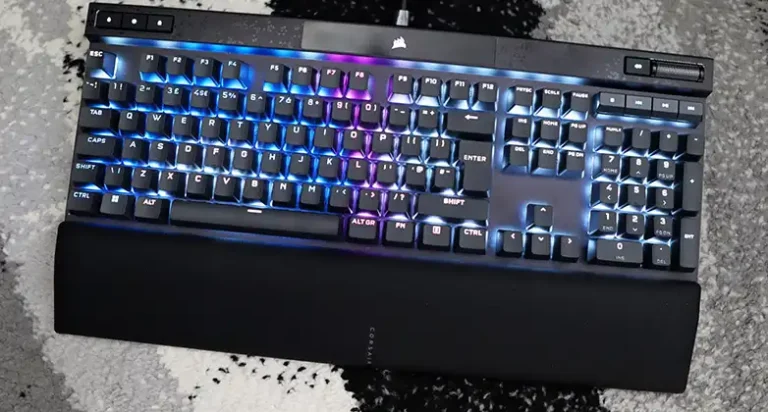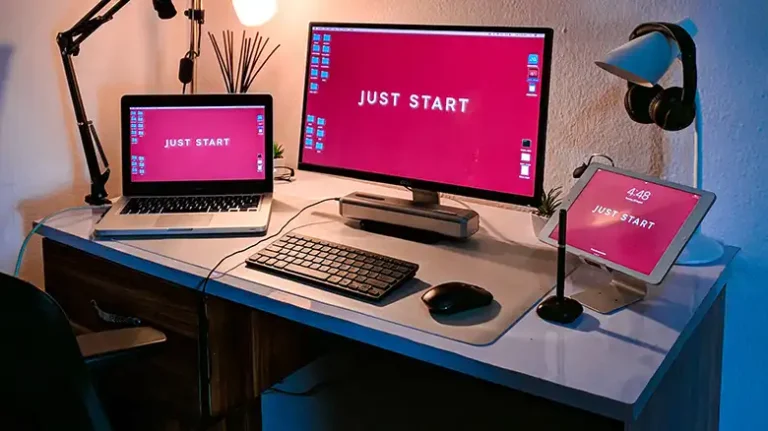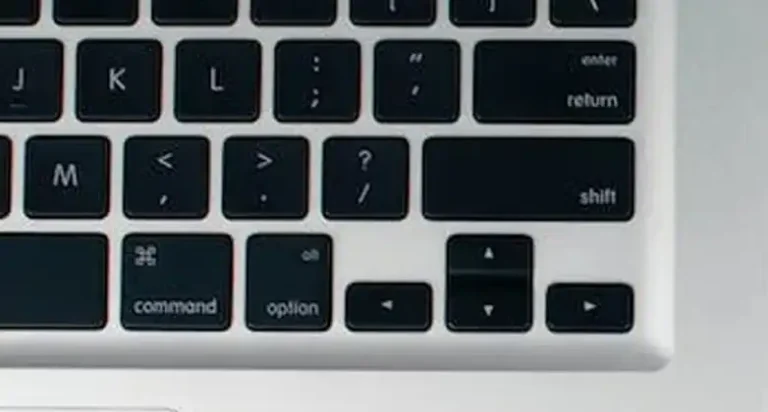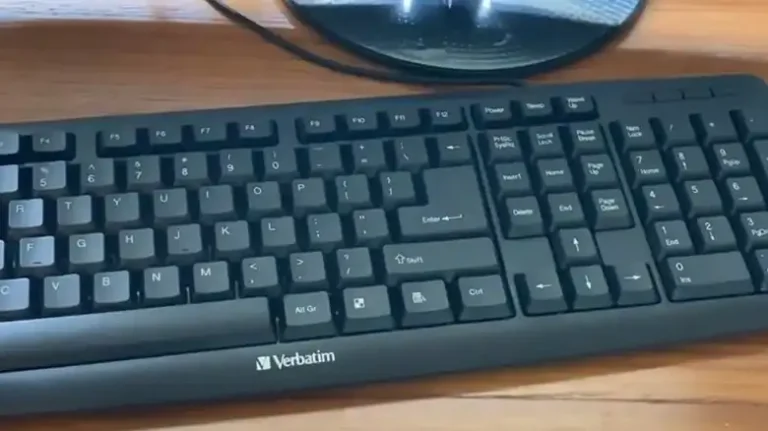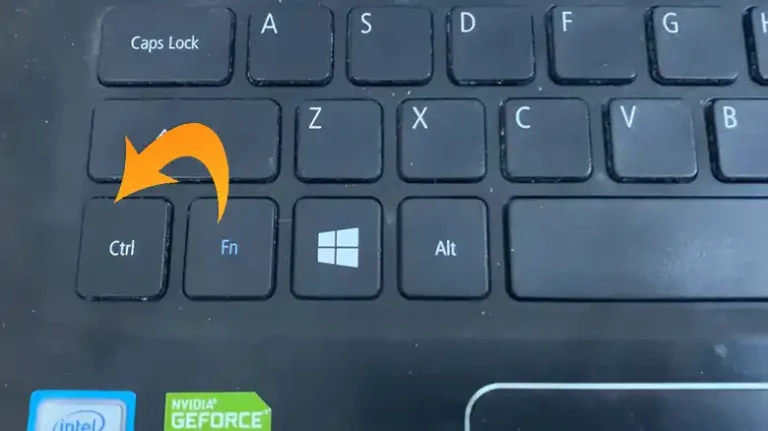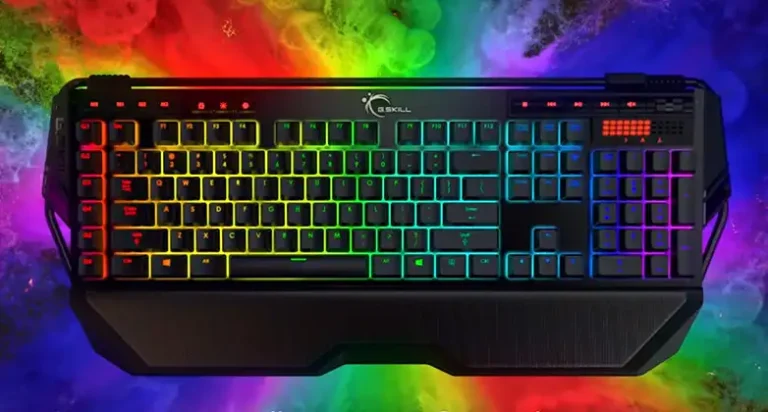Enter Key Stuck
Having a stuck enter key on your keyboard can be extremely frustrating. You press the key, expecting it to input and confirm commands, but nothing happens. Or, the key gets stuck halfway through its travel, giving you half a return. This issue prevents you from efficiently typing and using your computer.
Well, it can happen due to several reasons such as misplaced stabilizer, damaged key switch, dust, and so on. Well, if you own a mechanical keyboard like me then you can solve each and every issue very easily. But how? To learn more, be my guest till the end of this guideline!
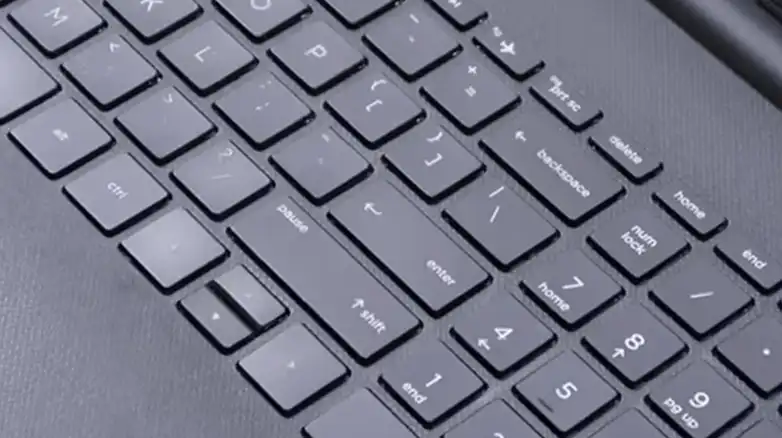
Why My Keyboard’s Enter Key is Stuck?
There are some common reasons for an enter key getting stuck. Identifying the culprit can help you address the root cause instead of just the symptom.
Damaged or Misplaced Stabilizer
Mechanical keyboards have small wire or plastic pieces under larger keys called stabilizers. Their purpose is to guide the key straight up and down during key presses, preventing tilting or binding.
If this stabilizer gets damaged or pops out of position, it can cause the enter key to scrape the sides of the switch or keyboard housing during a key press. This adds friction, leading to sticking.
Replacing or reseating stabilizers is an easy first step to try. Just pop off the enter keycap and inspect underneath. If the stabilizer looks obviously damaged or misaligned, that could be the culprit.
Damaged Switch
The switch is the physical mechanism underneath each key that registers presses. It has a stem that the keycap presses down, a spring that provides resistance and bounces back, and electrical contacts that complete a circuit with each keystroke.
If any part of this switch gets damaged, it can lead to sticking issues. For example, debris buildup on the stem can add friction, weak springs lose their tactile feedback, and bent leaf contacts get stuck closed or open.
Testing the enter key switch’s smoothness and tactile response compared to other keys can identify switch damage. If it feels obviously different from than functioning keys, the switch likely needs replacing.
Damaged Keycap
While less likely than stabilizer or switch issues, damage to the plastic entry keycap itself can also cause sticking.
Cracks in the keycap stem or uneven wear on its bottom where it contacts the switch can add friction during presses. Deformed or expanded stems may not move freely through the switch housing.
Carefully inspecting the keycap and stem for damage or comparing its fit on the switch to a known good key can determine if the keycap needs replacing.
Accumulation of Dust and Debris
Finally, a buildup of microscopic dust, skin cells, oils, crumbs, pet hair, etc under or inside a mechanical keyboard can impede the normal motion of keys.
The enter key’s large surface area and frequent use make it particularly prone to gradual debris accumulation compared to other keys. Over time, all this gunk adds friction and drag until key presses start to stick.
Blasting the enter key area with compressed air can dislodge debris and temporarily restore normal function. For a deeper clean, consider removing the keycaps and using isopropyl alcohol to dissolve built-up grime around the switches.
Cleaning a mechanical keyboard every 6-12 months helps prevent gradual sticking from dirt accumulation over long periods of use. Consider using a keyboard cover if environmental debris is landing on your keys.
Ways to Take Out the Enter Key from Stuck Position
If you’ve determined debris isn’t the issue, and your enter key seems physically stuck mid-press or unresponsive, don’t panic! Here are a few methods to potentially get it back in working order:
Way 1 – Replace or Properly Place the Stabilizer
As covered earlier, damaged or misaligned stabilizers under large keys like enter are a common failure point.
Gather your tools: You’ll need a small screwdriver (usually Phillip’s head), a pair of tweezers, and a keycap puller (optional).
Remove the keycaps: Locate the two small tabs on the bottom of the Enter keycap and use the keycap puller (or your fingers) to gently pry it upwards and remove it.
Inspect the stabilizer: Look for any signs of damage or misplacement of the stabilizer bar. If it’s broken, you’ll need to replace it with a new one specific to your keyboard model.
Re-position the stabilizer: If the stabilizer is simply misplaced, carefully re-position it back into its proper slots.
Test the key: Press the Enter key several times to see if it’s working properly. If not, you may need to repeat the process or consider replacing the keycap or switch.
Properly installed and intact stabilizers are essential for any large keyboard key to avoid binding and sticking issues during presses.
Way 2 – Clean or Replace the Keycap
Similarly, a damaged enter keycap itself that doesn’t smoothly move through the switch housing can cause sticking and friction.
Remove the keycap: Use the keycap puller or your fingers to gently pry the Enter keycap upwards and remove it.
Clean the keycap: Dip a cotton swab in rubbing alcohol and carefully wipe the underside of the keycap to remove any dust or debris.
Clean the key switch: Use compressed air to blow out any dust or debris that may be lodged around the switch.
Let everything dry completely: This is crucial before putting the keycap back on.
Reattach the keycap: Gently press the keycap back onto the switch until it snaps into place.
Test the key: Press the Enter key several times to see if it’s working properly.
Testing the keycap on a different switch can help isolate whether the issue is with the cap or other components.
Way 3 – Replace the Switch
If other components check out fine, chances are the enter key switch itself has failed in some way. Common failure modes covered earlier include broken internal parts, bent contacts, weakened springs, etc. Any physical damage to the intricate switch mechanisms can prevent smooth key presses.
On hot-swappable keyboards
Simply pull out the bad Enter switch and push a new one of the same type in. No soldering is required!
On soldered keyboards
The enter switch will need desoldering and a replacement cleanly soldered in. Requires more skill.
Step 1 – Gather your tools: You’ll need the same tools as for replacing the stabilizer, plus a soldering iron if your keyboard uses soldered switches.
Desolder the old switch: If your keyboard uses soldered switches, heat the solder joints with the soldering iron and carefully remove the old switch.
Prepare the new switch: If you’re using hot-swappable switches, simply insert the new switch into the empty socket. For soldered switches, bend the legs of the new switch slightly and insert them through the holes on the PCB.
Solder the new switch: If using soldered switches, heat the solder joints again to secure the new switch in place.
Reattach the keycap: Gently press the keycap back onto the switch until it snaps into place.
Test the key: Press the Enter key several times to see if it’s working properly.
For hot-swappable boards, keeping spare switches on hand for easy replacement of any failures is a good strategy.
Way 4 – Log Off and On in Safe Mode with Networking
Before getting into hardware repairs, consider software issues preventing proper enter key function…
Windows has a Safe Mode with Networking that loads only essential drivers and services. If a buggy 3rd party keyboard customization app or malware was causing sticky enter key issues in your main OS environment, Safe Mode may eliminate the problem.
- Restart your computer.
- As your computer starts to boot up, press and hold the F8 key repeatedly until the Advanced Boot Options menu appears.
- Use the arrow keys to select Safe Mode with Networking and press Enter.
- Log in to your computer.
- Once you’re in Safe Mode, log off and log back in.
- Restart your computer again.
Since Safe Mode strips out non-Microsoft services and software, it can determine if the enter key sticking stems from a deeper OS issue vs hardware failure. It’s worth a shot before buying replacement parts!
End Notes
After diagnosing what’s causing my stubborn enter key to stick, debris cleaning or replacing damaged keyboard components usually does the trick. Properly installed stabilizers, smooth keycap stems and proper switch function are key. If hardware fixes don’t resolve sticking, Windows Safe Mode helps rule out installed software as the culprit. With some targeted troubleshooting, I can typically get a “stuck” enter key fully functional again. Addressing root causes, not just symptoms, leads to sustainable fixes.
